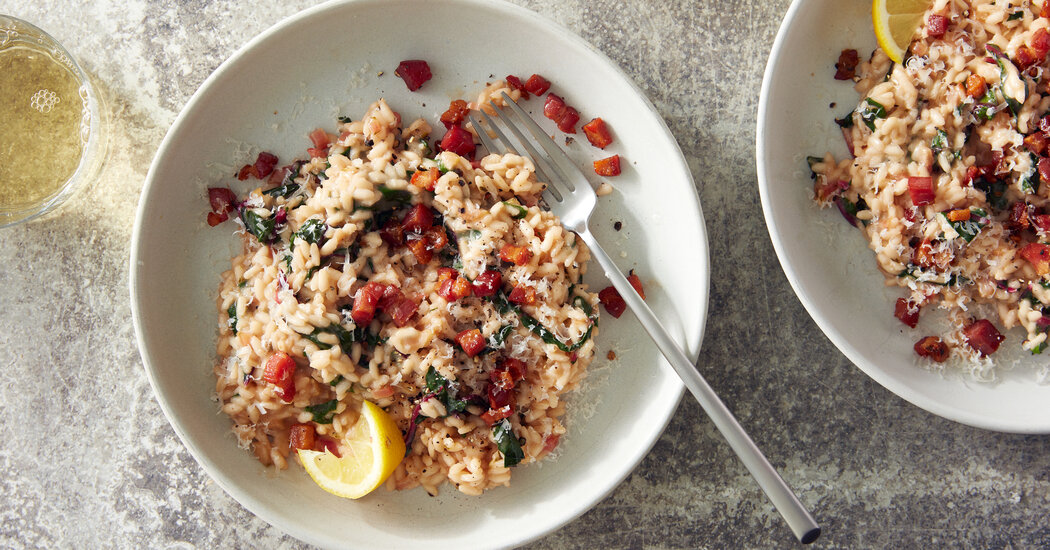
The day I found out that I didn’t have to stand over the risotto pot, stirring constantly with one hand as I awkwardly ladled in simmering liquid with the other, was the day the rice dish went into my permanent dinner rotation.
Before that, risotto was for special occasions only, something I’d trot out when I was trying to impress.
With the rumpled pages of my copy of Marcella Hazan’s “Essentials of Classic Italian Cooking” falling open to page 245 — Risotto With Parmesan Cheese — I gave the cooking technique my full attention, heeding the formidable author’s precise instructions.
“You must never stop stirring,” she wrote, explaining that it is through “the gradual administration of small quantities of liquid” and never-ending stirring that the soft starch of the short-grain rice is able to bind with the broth, creating a satiny sauce.
Rice that is not constantly stirred, she admonished, “may turn into a perfectly agreeable dish, but it is not risotto, and will not taste like risotto.” (Emphasis hers.)
Dutifully, I stirred and stirred, losing hours of my life to those needy rice pots.
When I heard there was an entire contingent of risotto rebels who did not abide by constant stirring, I immediately joined their ranks.
An occasional vigorous stir, I learned, works perfectly well. So does cooking rice and broth together in a stovetop or electric pressure cooker. And so does baking it.
Whether you feel comfortable calling the dishes that result from these techniques risotto is up to you and the Marcella in your head. But they are excellent methods, undeniably easier, and I’ve never gone back to page 245.
For this vegetable-rich rendition, I add an entire bunch of chard, both stems and leaves, to the risotto pan. The stems, sliced and sautéed with some shallots, turn sweet and succulent. The chopped leaves are mixed in later, wilting in the broth and speckling the rice with bits of green. If you can get Swiss chard that’s red, it tints everything gorgeously pink, but Swiss or rainbow chard with stalks of any color will work equally well.
I also threw in pancetta for a salty, brawny crunch. But it’s easy to leave out, and, if you weren’t expecting the pork, you’d never miss it. Or you can substitute shiitake or oyster mushrooms, sautéed until crisp.
The possibilities here really are endless. The ingredients in risotto, it turns out, are just as adaptable and forgiving as the cooking method.
Recipe: Risotto With Chard and Pancetta




